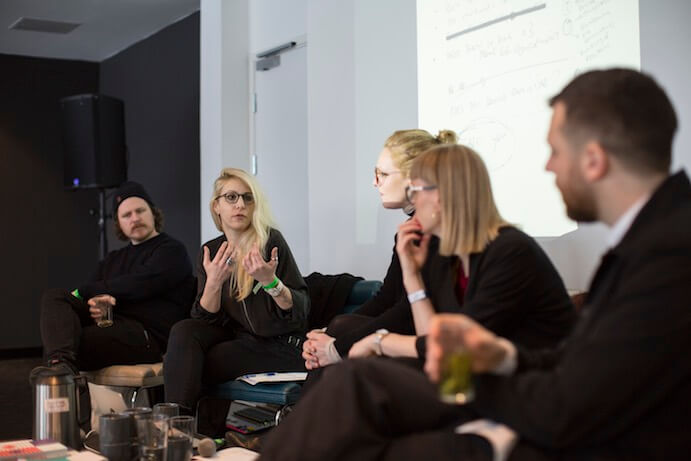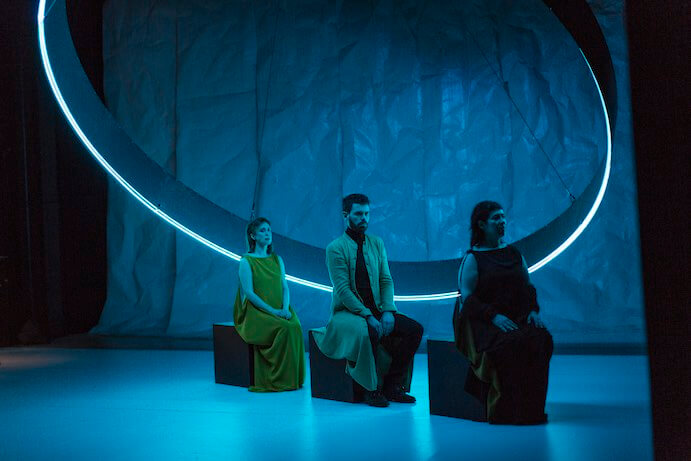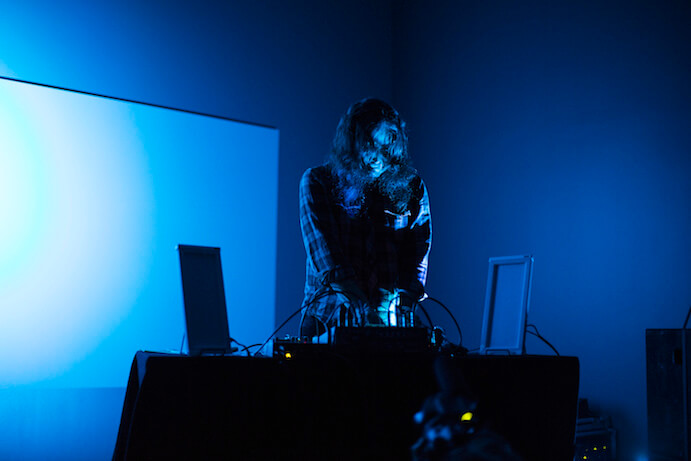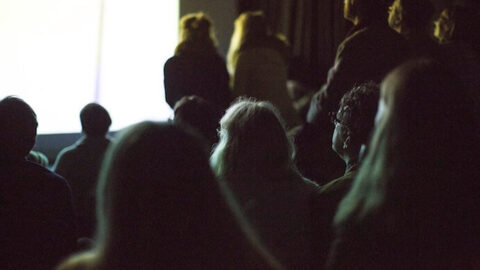“Listening to the same piece again is nostalgic—nostalgia is the worst kind of disease to have.” In a panel discussion with Iceland’s S.L.Á.T.U.R. collective, Áki Ásgeirsson drew attention to this simple concept: why repeat something when you can create something new? Borealis answers this question by serving as a catalyst for experimental music, but the nature of the word “experimental” implies that the outcome is uncertain. One conducts an experiment in order to test and investigate, with the understanding that failure is a possible result.
Early in the festival, the PIN Network (Davorka Begovic, Gudny Gudmundsdottir, John Chantwell, and Peter Meanwell) discussed a desire to broaden the reach of experimental music festivals without necessarily expanding programming—to be better, but not bigger. The general sentiment among these curators was that there is more room for failure in smaller festivals. Larger festivals with larger budgets bring with them a demand for consistent, high quality work, but this demand for perfection contradicts the experimentalist attitude. In order to experiment, failure must be embraced as an option.
We often think of failure as the opposite of success, but failure can also be a neglect of expectation or a state of not functioning. When discussing experimental music, focusing on expectations and functionality can break down the strictly binary success/failure polarity and can perhaps remove the stigma from the word “failure.” Failure, therefore, does not have to be a negative outcome—in fact, failure is necessary if one seeks to push the boundaries of creativity and artistic expression.

Rather than solely relying on my own personal tastes, I try to judge all music by the same simple standard: did the composition/performance accomplish what it set out to do? Thus, a performance can fail when musical ideas are not clearly realized or properly communicated, but a piece can also fail if the artistic intention is not articulated at the outset or clear by the conclusion of the performance. Several performances throughout the weekend at Borealis failed to clearly establish and/or communicate artistic ideas, but did so in a space that anticipates failure and encourages critical discussions of new works.
While almost all of the works presented throughout the festival had thoughtfully-written program notes, some works neglected to clearly communicate these artistic ideas in performance. Rebecka Sofia Ahvenniemi’s Opera Trailer: Beyoncé and Beyond featured an archetypal opera diva attempting to break free of her stereotypical narrative through the power of highly sexualized Beyoncé lyrics. While it was undoubtedly entertaining to hear text such as “We fuckin’ all over the house, babe” sung in an Italian opera recitative style, the use of pop-style vocals and contemporary lyrics were not enough to subvert historical perceptions of women in opera.
On the same program, Øyvind Mæland’s grønne steintrinn attempted to explore “what you thought you’d never remember,” and while the libretto gradually revealed fragments of memories involving Laika the Soviet space dog, the full picture never quite came together. The result was a disoriented oscillation between simple repeated phrases, anguished lamenting melodic contours, and sprechstimme-like rapid-fire text delivery. Despite this chaotic structure, the performers demonstrated an impressive capacity for rhythmic and melodic unisons.

In an uncharacteristically poor programming choice, the only concert at Borealis featuring music by all white men performed by all white men immediately followed an energized and empowering two-hour discussion about inclusive and intersectional programming. The members of the Valen Trio are certainly highly skilled contemporary musicians committed to expanding the capabilities of the piano trio—however, their 47-minute program of ultra-quiet music forced listeners into an uncomfortable position. The compositions by Sigurd Fischer Olsen and Knut Vaage both featured an array of barely perceptible techniques—pianissimo col legno articulations, depressing piano pedals, lightly tapping strings with the bow frog, scraped piano strings, and even “playing” in an exaggerated pantomime. These techniques demanded strained listening, which left the audience holding their breath and trying not to shift in their seats for nearly an hour.
Other performances featured intensely dedicated performers, but the artistic intention—and therefore the criteria by which to assess the performance—was unclear. Experimental noise musician Raven Chacon performed a set at one of the late night concerts at the Bergen Kunsthall. Having admittedly little experience with the genre, I was struck by the intensity of Chacon’s performance, but had difficulty processing the 30 minutes of ear-splitting screeching, aggressive staticky shouting, and pounding bass. I found myself similarly engaged yet perplexed by British artist Sue Tompkins’ text piece St St Steadicam high, which wove together a seemingly incoherent, stream of consciousness thread of sung fragments, unrelated phrases, dancing, and wild gesticulating with the microphone.

The performances at Borealis that failed to meet expectations or failed to function properly revealed that when there is a transparent acknowledgement that some things will work and others won’t, there is a resulting freedom of expression that allows a piece to fail without immediate backlash from the pretentious classical music “elite.” In any creative field, failure is always a possibility–and failure is sometimes inevitable–but Borealis embraces the potential for failure in a way that recognizes its essential role in experimental music.
























